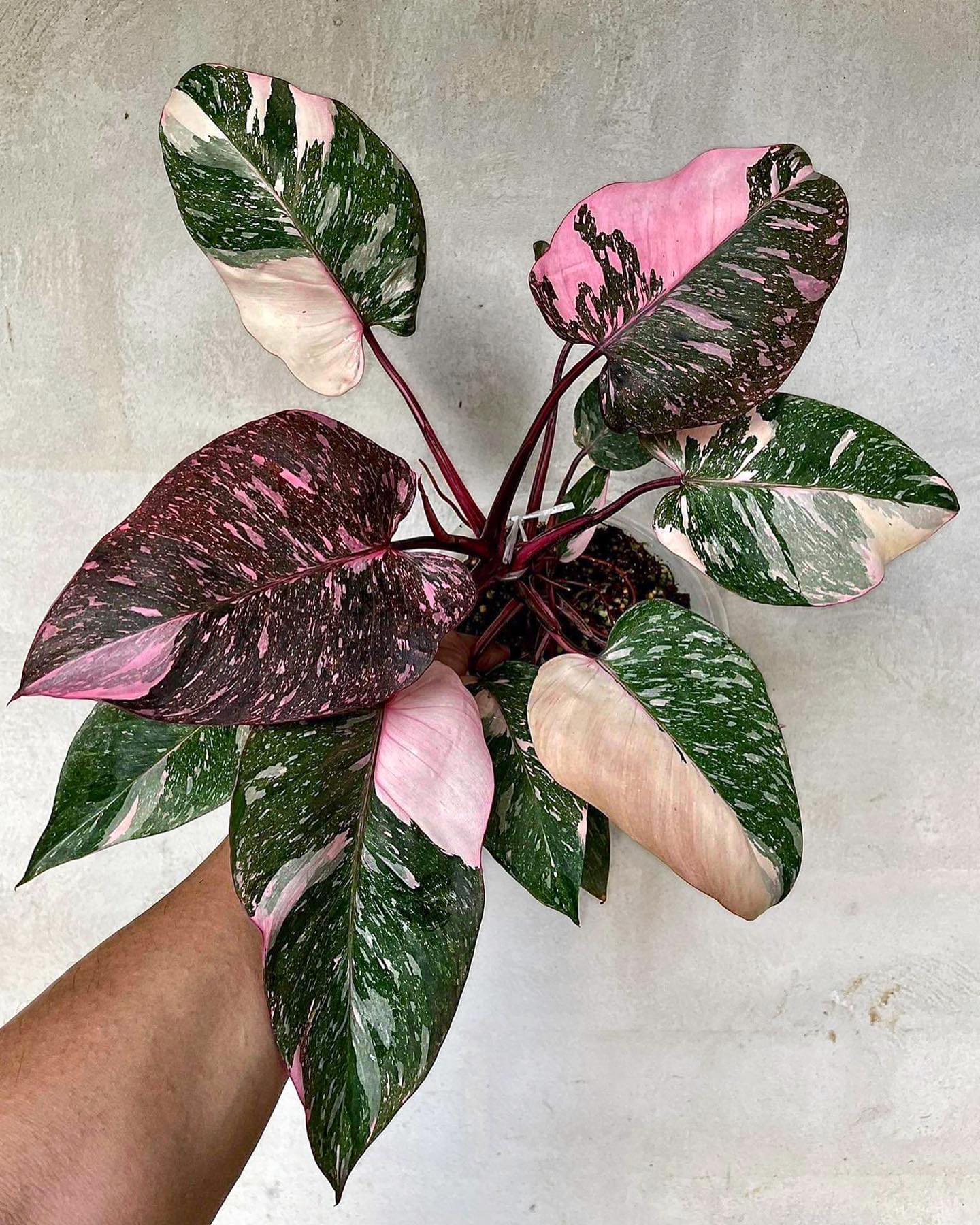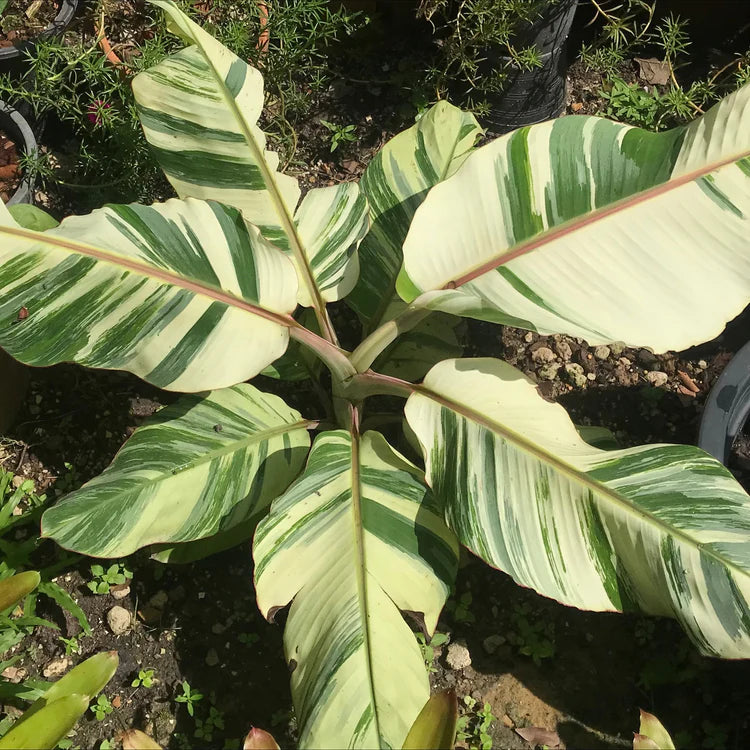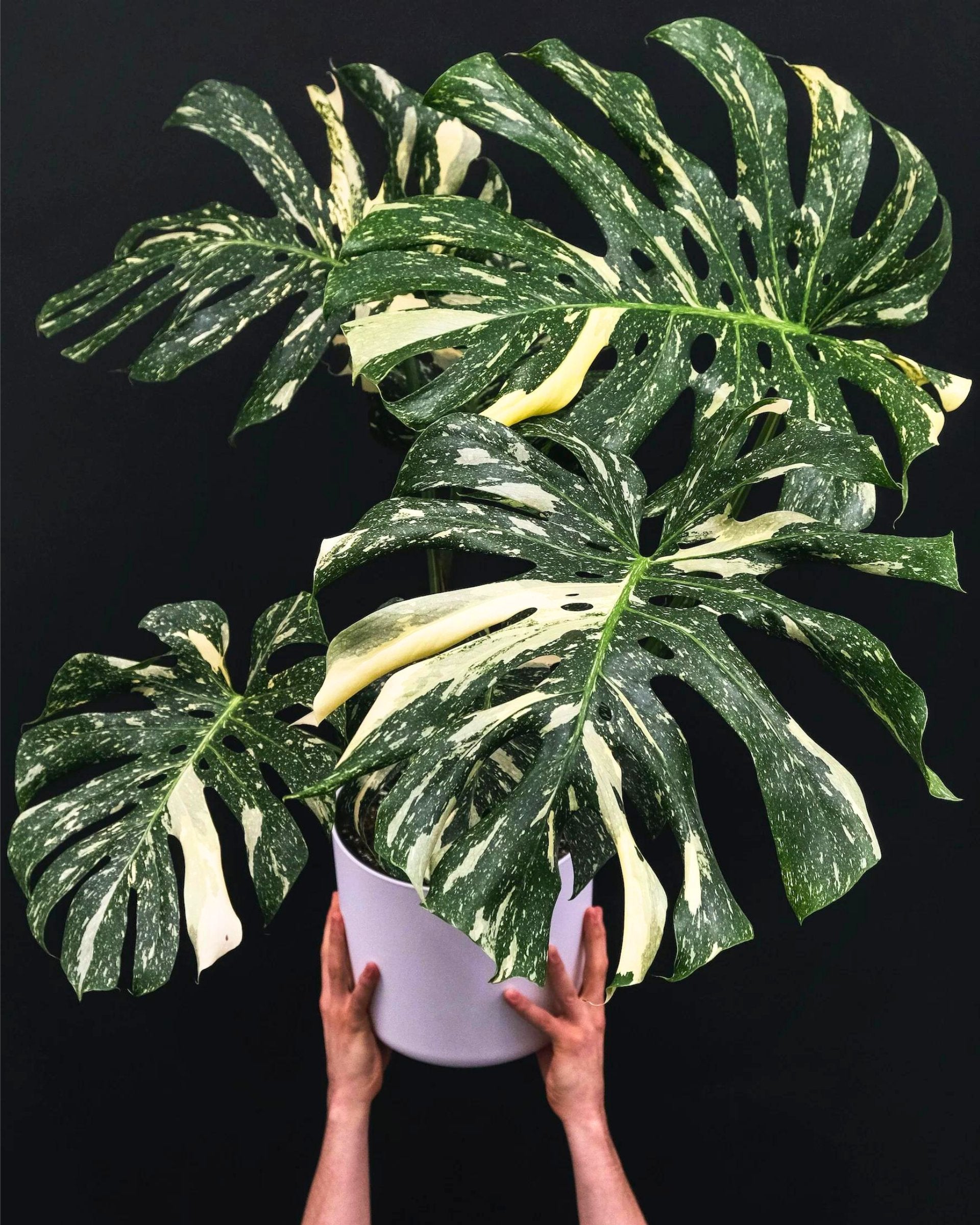Variegated Banana Plant Guide
Variegated banana plants are one of the most eye-catching and exotic plants you can add to your garden or home. These beauties are not your average banana tree; they are a conversation starter. Known for their stunning variegated leaves and their rarity, these plants can be a fantastic addition to any plant collection. In this comprehensive guide, we will delve into everything you need to know about caring for and understanding this unique plant.
Table of Contents
- Introduction
- What Makes Variegated Banana Plants Unique
- Origins of the Variegated Banana
- Ideal Growing Conditions
- Planting Your Variegated Banana
- Watering and Humidity
- Nutrition and Fertilization
- Common Issues and Solutions
- Propagation Tips
- How to Encourage Fruit Production
- Frequently Asked Questions
What Makes Variegated Banana Plants Unique
Color Variation
The main attraction of a variegated banana plant is undoubtedly its unique foliage. The leaves are streaked with various colors, usually featuring a blend of green and cream or white shades. This striking appearance makes it a popular choice for garden enthusiasts looking to add a touch of exoticism to their environment.
Rarity
Another aspect that sets variegated banana plants apart is their scarcity. These plants are rare, which adds to their allure and, in some cases, their price tag. They're not something you'll commonly find in your average nursery, making them a prized possession for collectors. You can purchase one from specialized online stores, such as PlantVault.
Origins of the Variegated Banana
Historical Background
Variegated bananas have a rich history that traces back to tropical regions of Asia and Africa. The plant has been cultivated for thousands of years for both ornamental and agricultural purposes.
Taxonomy
Variegated banana trees belong to the genus Musa, which is native to Southeast Asia and the South Pacific. The exact species of a variegated banana can vary, with several subtypes being cultivated for their striking appearances.
Ideal Growing Conditions
Light Requirements
Variegated banana plants thrive in well-lit conditions. However, they don't enjoy being directly exposed to harsh sunlight, as this can cause leaf burn. It's advisable to use Grow Lights and a Light Meter to regulate the lighting conditions effectively.
Soil
Choosing the right soil is crucial for the growth of your variegated banana plant. They prefer a well-draining, slightly acidic to neutral soil. You can use Aroid mix blended with Perlite for good drainage.
Temperature and Humidity
Being tropical plants, variegated bananas prefer warmer climates and high humidity levels. They struggle to survive in cold conditions, so keeping them indoors during winter is a wise choice. A Humidifier can help maintain optimal humidity levels.
Planting Your Variegated Banana
Initial Planting
Once you've chosen the ideal location and soil, dig a hole at least twice as large as the root ball of your variegated banana plant. Gently remove the plant from its pot and place it in the hole, ensuring that it sits at the same height as it was in its original pot.
Root Health
Before planting, it's beneficial to inspect the roots. Healthy roots should appear firm and white or light brown. Trim away any dark or mushy roots, as these are signs of rot.
Organic Matter
For optimal growth, mix organic matter like Worm Castings and Organic Compost into the soil. These additions will provide necessary nutrients and improve soil structure.
Watering and Humidity
Watering Frequency
It's crucial not to over-water your variegated banana plant. Using a Moisture Meter can help determine when it's time to water. Keep the soil moist but not soggy.
Humidity Levels
As mentioned earlier, variegated bananas thrive in humid conditions. Mist the leaves occasionally or place a humidifier nearby to keep the humidity levels high.
Nutrition and Fertilization
Choosing the Right Fertilizer
Variegated banana trees are heavy feeders and require plenty of nutrients for optimal growth. A Slow Release Fertilizer is ideal as it supplies nutrients over an extended period.
Common Issues and Solutions
Pest Infestations
Variegated banana plants, like many others, are susceptible to pest attacks. Spider mites, aphids, and mealybugs are among the common culprits. Using Neem Oil or Insecticidal Soap can help in controlling these pests.
Disease
Fusarium wilt and Panama disease are some of the fungal infections that can afflict variegated bananas. Quarantining the infected plant and applying fungicides can help combat these diseases.
Leaf Discoloration
Improper care can lead to leaf discoloration. If your banana plant's leaves start to fade or develop brown spots, this is often a sign of nutrient deficiency or overwatering.
Yellowing Leaves
Yellowing leaves usually indicate a watering issue. Overwatering or underwatering can lead to this problem, so adjusting your watering schedule and ensuring proper drainage can help.
Growth Stagnation
If your variegated banana plant isn't growing as expected, inadequate lighting or insufficient nutrients could be the reason. Grow Lights and Slow Release Fertilizer can help tackle this problem.
Propagation Tips
Separating Suckers
One of the most straightforward ways to propagate a variegated banana plant is by separating the "suckers" or "pups" that grow at the base of a mature plant. Carefully dig around the sucker and gently separate it from the main plant, making sure to get some roots as well.
Tissue Culture
Another, more advanced, method involves tissue culture. This method is best left to professionals, as it requires a sterile environment and specialized skills.
How to Encourage Fruit Production
Provide Optimal Conditions
For those looking to encourage fruit production, providing optimal growing conditions is crucial. Adequate sunlight, proper watering, and balanced fertilization play a significant role in fruiting.
Pollination
Though banana plants are generally self-pollinating, you can aid the process by manually transferring pollen from the male flowers to the female flowers using a small brush.
Frequently Asked Questions
Why is Variegated Banana so Expensive?
The rarity and unique beauty of variegated banana plants contribute to their higher cost. Their scarcity makes them a prized possession for collectors and plant enthusiasts alike.
How Do You Care for a Variegated Banana Tree?
Variegated banana trees require well-drained soil, moderate to bright light, and high humidity for optimal growth. Regular feeding with a balanced fertilizer will help keep them healthy.
Do Variegated Bananas Taste Different?
While the variegated banana plant is primarily grown for its ornamental value, if it does produce fruit, the taste is generally similar to that of regular bananas.
How Tall Do Variegated Banana Plants Grow?
The height of a variegated banana plant can vary depending on the species and growing conditions, but they generally reach between 6 to 12 feet in height.
Do Variegated Banana Trees Produce Fruit?
Variegated banana plants can produce fruit, although it's relatively rare and primarily depends on the care and conditions provided.
Enhancing the Visual Appeal
Indoor Display Ideas
If you're keeping your variegated banana plant indoors, consider placing it in a decorative pot that complements the colors of the leaves. The use of accessories like Leca can enhance the visual display and add to the overall aesthetic.
Outdoor Arrangement
For outdoor settings, pairing your variegated banana tree with other tropical or subtropical plants can create a visually appealing mini-ecosystem. Consider surrounding your banana plant with colorful annuals or other eye-catching foliage plants.
Recommended Accessories
Moisture Meter
Keeping the soil moisture levels optimal is crucial for the well-being of your variegated banana tree. A Moisture Meter can help you ensure that you're watering your plant appropriately.
Light Meter
If you want to be precise about the light conditions, a Light Meter can be invaluable. This device will tell you whether the spot you've chosen for your plant receives the amount of light it needs.
Organic Additives
Enhance the soil with Worm Castings or Organic Compost to add nutrients naturally. These organic materials will enrich the soil and promote healthier growth.
Pest Control
A preemptive measure for pest control, such as Bonide Systemic Houseplant Insect Control, can be used to protect your plant from potential pest infestations.
Wrapping It Up
With its striking appearance and relatively simple care requirements, a variegated banana tree can be a stunning addition to your home or garden. They may require a bit more attention compared to your average houseplant, but the aesthetic and ornamental benefits make all the effort worthwhile.
Shop the Nono Pink Variegated Banana
If you’re looking to purchase a variegated banana plant, the Nono Pink Variegated Banana is an excellent choice available at Plant Vault.
Final Thoughts
The variegated banana plant isn't just another pretty face in the botanical world. It offers both aesthetic and potential functional benefits, and with proper care, it can be a rewarding experience for any plant enthusiast.
Frequently Asked Questions
How Fast Do Variegated Banana Trees Grow?
Variegated banana trees generally grow at a moderate pace. However, the growth rate can significantly depend on the care and environmental conditions provided.
What is Musa Florida Variegated Banana Fruit?
The Musa Florida Variegated Banana is a unique variety of banana that is known for its striking variegated leaves, rather than its fruit. This cultivar is primarily grown for ornamental purposes and adds a tropical flair to any garden or interior space. Unlike common banana varieties, the focus here is more on the aesthetics of the foliage rather than fruit production.
Is Variegated Banana Edible?
Variegated banana plants are primarily grown for their ornamental value, and their fruit is generally considered inedible. Although they do produce bananas under the right conditions, these bananas have seeds and are not like the commercially available bananas that most people are familiar with. If you're growing a variegated banana plant, it's best to focus on its decorative attributes rather than considering it a source of food.
What is the Rarest Banana?
The rarest banana is arguably the Blue Java Banana, also known as the "Ice Cream Banana" because of its unique blue skin and vanilla ice cream-like taste. It is rare because it is difficult to propagate and requires very specific growing conditions. While the variegated banana is a rare sight in most gardens and homes, in terms of rarity in the banana species, the Blue Java Banana takes the crown.



